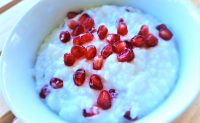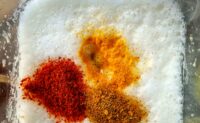Fenugreek Spread (Hilbeh): A Step-by-Step Guide to Health and Flavor
Eyal Shpringer
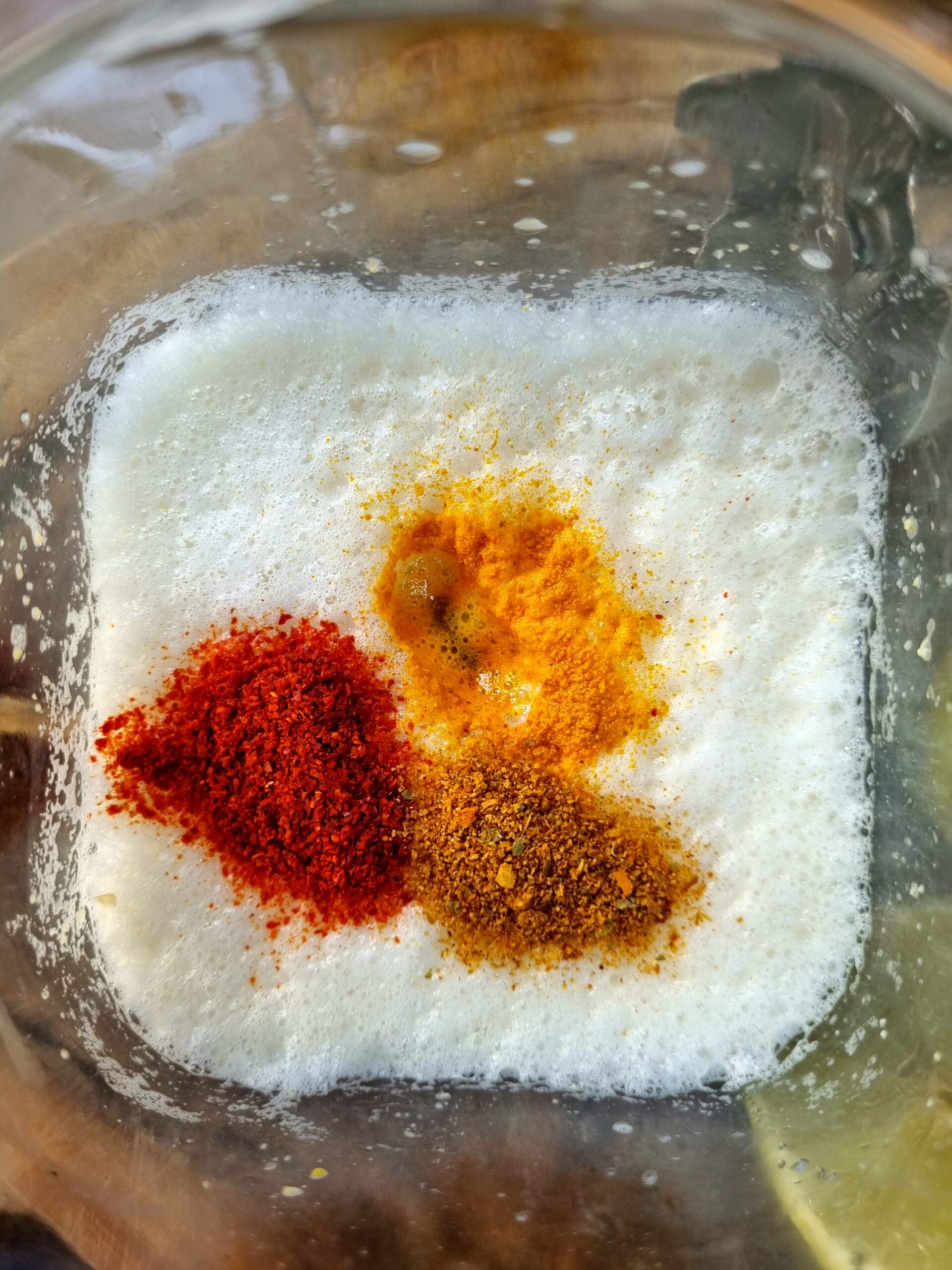
Fenugreek is one of those foods that would be highly demanded if imported from a distant land, put into capsules, and sold at a high price as a rare and effective medicinal plant.
Unfortunately, fenugreek suffers from a poor reputation. Its great availability and intense smell make it a food that many underestimate, which is why it became a rare product in most kitchens.
I envision making fenugreek a staple in the homes of my students and patients. Therefore, when I teach the postgraduate course in traditional medical nutrition, the learning day opens with a festive breakfast rich in healing foods that allows a practical experience of the content I teach. Over the years of teaching, I have noticed that many students join my courses while they are unhealthy, tired, and too “Yin.” In their condition, learning, let alone setting up a functioning clinic, is impossible!
Therefore, I use breakfast to give the students strength, thus turning the study framework into a recovery framework, in which the participants eat balanced and strengthening foods and are exposed to raw materials that can be used at home to continue the recovery and strengthening process. The same thing happens with fenugreek: over the course of several weeks, I get the students of the course used to incorporating fenugreek spread (Hilbeh) into breakfast, get to know it in different combinations, and even prepare fenugreek-based dishes by themselves and bring them to class. As the course progresses, many of the participants actually form an emotional bond with Fenugreek.
In a little while, I will present here a recipe that allows you to create different variations of the fenugreek spreads, so even those who did not grow up on this food (like me) can get used to the taste and adopt it for their home kitchen. Those who want to look at the many healing qualities attributed to fenugreek are invited to skip the recipe and the final sections of this page.
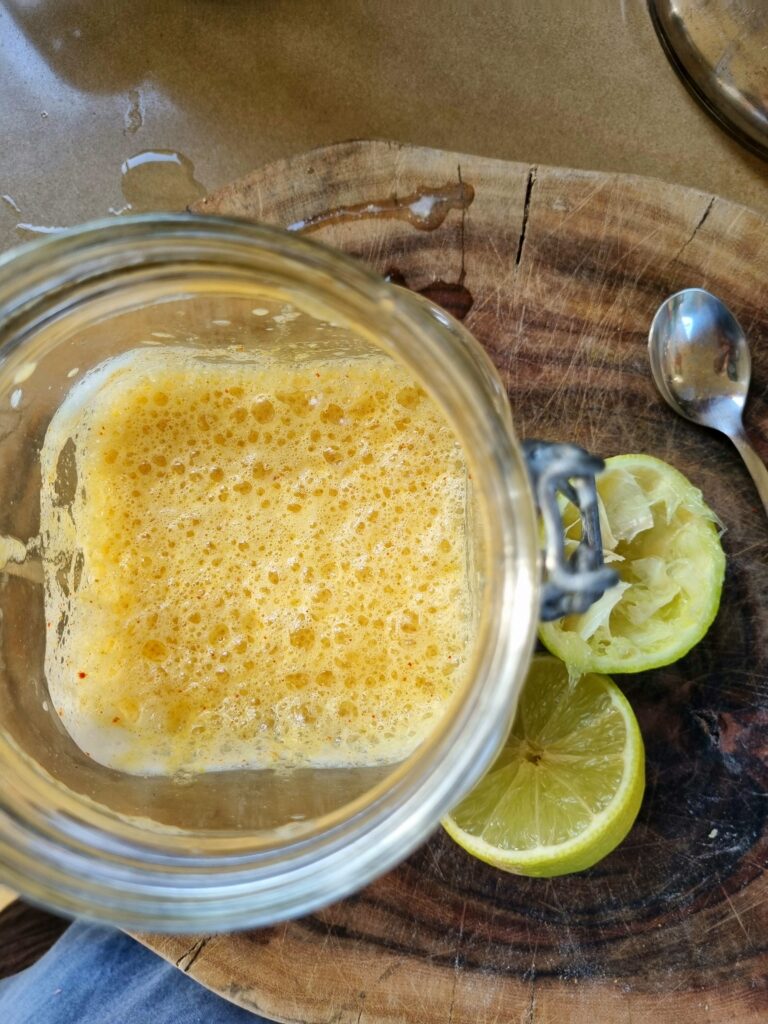
Fenugreek spread (a modular recipe )
Fenugreek spread for beginners
It is intended for those unfamiliar with spicy, coriander, and new flavors.
It is also suitable for patients who should avoid spicy (e.g., those with most skin diseases, eye irritation, restlessness, sleep difficulties, and certain digestive disorders).
Preparation method for beginners:
A tablespoon of fenugreek seeds should be soaked overnight.
The next day, wash the seeds and add a pinch of salt and juice from a whole lemon or half a lemon, according to your preference for the sour taste.
Add a cup of water and grind well using an electric hand blender. It is advisable to froth the liquid by keeping the blades close to the surface. The whipped fenugreek should have the texture of a slightly thick smoothie.
Store the spread in a glass container and eat immediately, or keep it in the refrigerator (the liquid will thicken and solidify with rest and cooling).
You can add the fenugreek spread to soups (it doesn’t have to be Yemeni soups), grind it, dip your pita bread in it, or eat it with a spoon.
For the more advanced:
Another step to authentic fenugreek is to add about half a cup of cilantro leaves or parsley while grinding if you hate coriander. For those who like both, cilantro is more delicious and suitable (it is a cooling plant that balances the hot nature of fenugreek).
For the most advanced – go all the way with the spicy:
You are invited to experiment with adding some or all of the following substances to obtain a spicy and aromatic fenugreek spread that stimulates and further expresses the fenugreek’s yang quality:
-2 cloves of garlic
– 1/2 teaspoon of red or green Schug (a hot and spicy Yemeni condiment)
-Replace the Schug with a small red or green pepper. For beginners, use hot peppers without the seeds; for the experienced, use peppers with seeds that increase the spiciness. It is advisable to proceed slowly and learn about different types of hot peppers to control the spiciness.
– 1/2 teaspoon of fenugreek seasoning mix that can be bought in markets.
To add a variety of colors and tastes:
-If you are interested in red fenugreek, you should use red pepper or sachug, and you can also add one or two tomatoes
– For a yellow-green shade that contributes to the movement-creating quality of a spice – use pepper or green sago and add a flat teaspoon of turmeric
– for added aromaticity and digestive support – half a teaspoon of black cardamom seeds (without the pods) and/or half a teaspoon of roasted cumin seeds
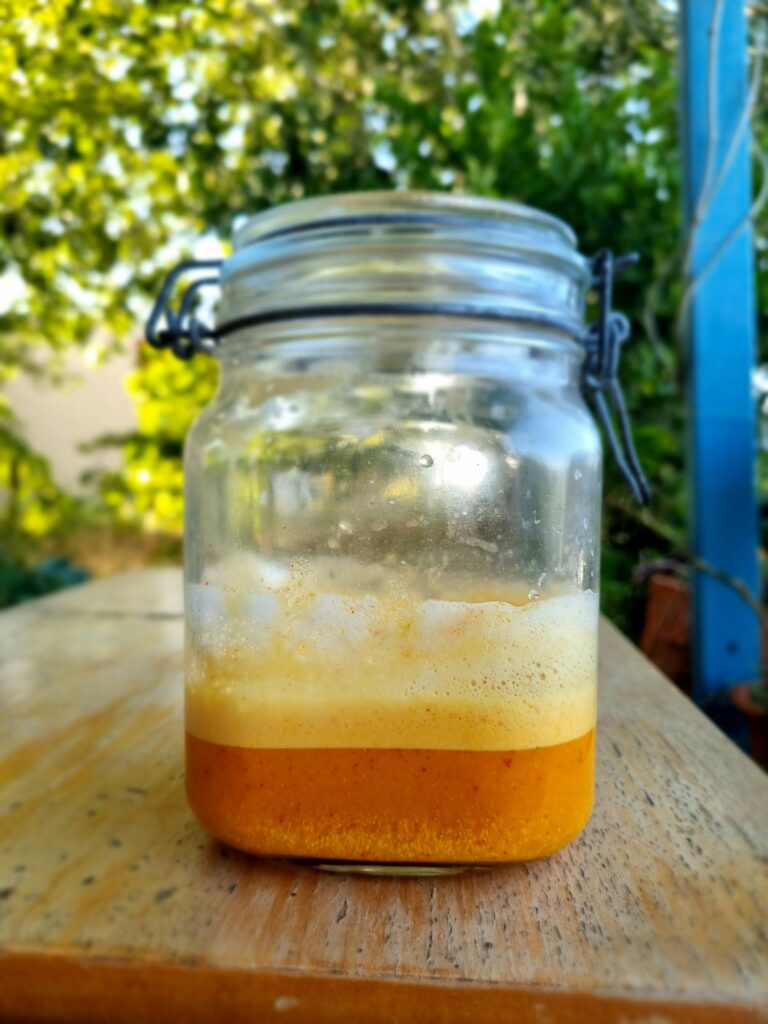
Better use it on the weekend: how and when do I incorporate fenugreek at home?
Yes, I am familiar with all the recommendations for reducing the body odor created by eating fenugreek: soaking, washing, and adding cilantro… it doesn’t work for me! Therefore, at my home, preparing and eating the fenugreek on weekends is customary; thus, only the close circle of family members will get to “enjoy” the smell. For the same reason, we serve more fenugreek on vacations and in winter when sweating less and wearing more layers of clothes reduce mask the smell while also supporting the kidney yang necessary in winter.
Fenugreek paste from the perspective of traditional medicine
Both bitter and warm!
Fenugreek is truly an extraordinary dietary substance due to its honorable status as a member of a small elite group of foods and edible plants that combine a bitter taste with a hot or warm quality. The bitter taste directs the qi, our vital force, down from the head, chest, and digestive tract to the pelvis area and legs. Additionally, despite the bitter taste that is often associated with a cooling effect, fenugreek is actually characterized as having a warm quality. Therefore, fenugreek is a special food due to the combination of the downward movement of the bitter taste and the warm and strengthening quality. This combination may explain the profound strengthening effect of fenugreek in traditional medicines, which links it to the kidneys, the digestive system, the sexual organ, and the reproductive system.
Both slippery and drying!
Another unique characteristic of fenugreek is the combination of its drying quality resulting from the bitter taste and the additional tastes and attributes of spiciness, astringency, and lightness (according to Ayurveda) and the slippery quality. This combination of slipperiness that envelopes intense flavors, added with moving and drying qualities, makes fenugreek an ideal substance for addressing phlegm accumulations, as the slippery quality enables movement while the intense flavors and aromas invigorate and the movement.
Additional uses
Various traditional medicines use these seeds to treat various medical conditions, such as diabetes and lack of appetite, improve milk production in breastfeeding women, address fatigue, increase libido, and treat hormonal imbalance during menopause.
Germany’s Commission E, the regulatory body for medicinal plants, approved using fenugreek to treat loss of appetite.
Treatment of digestive disorders: The European Scientific Cooperative on Phytotherapy (ESCOP), a leading European organization in the field of medicinal plants, defined fenugreek as a plant that helps to relax smooth muscles along the digestive tract, especially in the duodenum and as a plant that helps to treat abdominal pain and indigestion.
Hair and skin: fenugreek, used internally and externally, treats hair loss and relieves skin irritations.
Emphasizing the different healing aspects of fenugreek
Fenugreek paste is one of the effective ways to consume it and express its medicinal effects.
Using only lemon and cilantro emphasizes control and restraint; the combination of the acidity of the lemon with the bitterness and coolness of the cilantro is particularly appropriate for supporting women approaching menopause or for improving breast milk production.
The combination of turmeric in the fenugreek paste emphasizes its hypoglycemic activity (reducing blood glucose levels).
The classic-spicy versions emphasize the legume’s heating, stimulating, and yang-strengthening effect and are suitable for damp, tired, and cold patients who need to support and energize their yang.
Of course, to fully express the fenugreek paste’s healing properties, combining it with foods that match the treatment strategy is advisable.
Note: Fenugreek is unsuitable in cases of fever, and one should be careful when using it during pregnancy.
Eyal Shpringer is a Chinese medicine practitioner and a clinical herbalist specializing in Chinese nutrition and traditional nutritional approaches. Eyal holds a master’s degree in East Asian medicine research. Since 2007, he has been teaching a postgraduate training program in Chinese and oriental nutrition according to the TEF method and other courses and workshops for practitioners. Eyal co-authored the bestselling book “Cooking for Life: A Traditional Nutrition Cookbook for Cancer Patients” (Hebrew).
Did you find the recipe interesting? Do you want to continue studying with me?
You are invited to join me on my Instagram page and the Traditional Nutrition and Medicine Facebook group.
